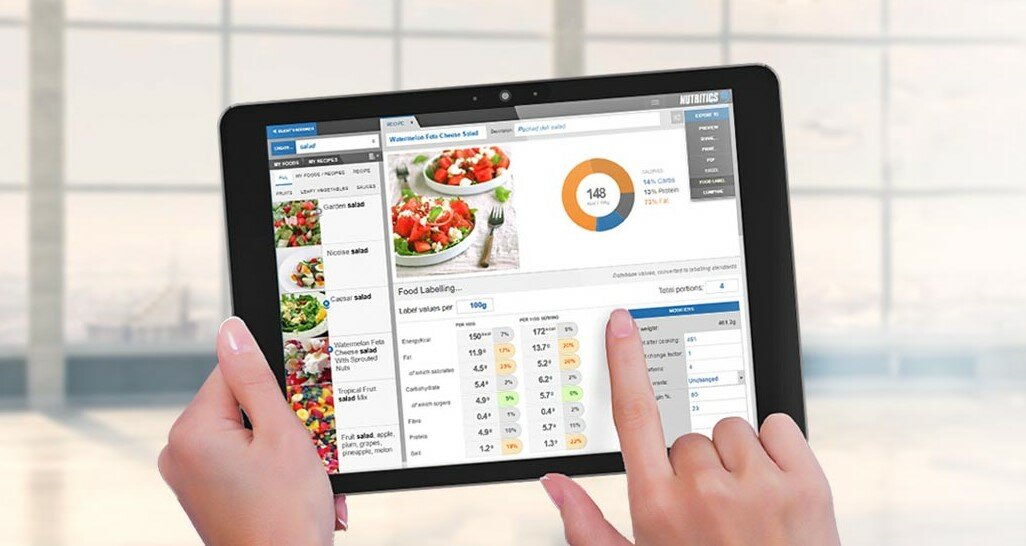How Should the 14 Allergenic Ingredients be Presented on Pre-packaged Food?
With less than two weeks to go until the UK Food Information Amendment, also known as ‘Natasha’s Law’, is being introduced, we’ve put together a guide outlining how the 14 allergenic ingredients should be presented on pre-packaged food.
Natasha’s Law states that for all pre-packed for direct sale (PPDS), the name of the food and all ingredients must be listed on the packaging with 14 allergenic ingredients emphasised (for example in bold, italics or a different colour). These changes will apply to businesses in England, Wales and Northern Ireland from October 2021 and are also expected to come into force in Scotland in the near future.

Natasha’s Law For Food Businesses: How Should the 14 Allergenic Ingredients be Presented on Pre-packaged Food?
Pre-packed food must have an ingredients list. The 14 allergenic ingredients must be emphasised each time they appear in the ingredients list. Allergenic ingredients can be listed in bold, contrasting colours or by underlining them. Most commonly, allergenic ingredients are presented in bold.
Please see the below example of how the 14 allergenic ingredients can be listed (note the bold font):

Other Key Areas to be Mindful of When Presenting the 14 Allergenic Ingredients

#1 Displaying the 14 Allergenic Ingredients on PPDS Food
For ease of clarity, all 14 allergenic ingredients must be accompanied by a clear link to the associated allergen. In other words, if a food contains an allergen, both the food name and allergen implemented must be displayed on the ingredients list. Examples of ingredients that need to be clearly referenced to the allergen are:
-
-
-
-
-
-
-
-
-
-
-
-
-
-
-
-
-
- Butter (milk)
- Tahini paste (sesame)
- Oats (gluten)
-
-
-
-
-
-
-
-
-
-
-
-
-
-
-
-
An explanation of allergen advice statements presentation can also be used on the product label, for example:
‘Allergen Advice: for allergens, see ingredients in bold’
For alcoholic drinks without an ingredient list, the word ‘contains’ followed by the name of the allergen is enough to indicate its presence.
#2 Precautionary Allergen Labelling
If there is a risk of a food product being affected by allergen cross-contamination, the label should include one of the following statements:
-
-
-
-
-
-
-
-
-
-
-
-
-
-
-
-
-
- May contain X
- Not suitable for someone with X allergy
-
-
-
-
-
-
-
-
-
-
-
-
-
-
-
-
Precautionary allergen labelling should be used exclusively after a thorough risk assessment has been completed. It should only be used if the risk of allergen cross-contamination is real and cannot be removed. This way, ‘may contain’ statements have more credibility, building you more customer confidence!
#3 Free-from Labelled Foods
If your product label contains terms ‘free from’ declarations like ‘free from milk’ or, ‘peanut free’, it has to be based on specific and rigorous controls. These controls are there to protect the consumer and need to ensure that the final product is 100% free of the allergen at hand. This means that all ingredients and packing materials must be assessed to ensure they do not contain this allergen, and that cross contamination from other allergenic foods is avoided entirely.
There is one exception to this rule which is gluten. Gluten-free labelled products can contain a maximum 20 mg/kg of gluten.
#4 Language on the Label
It is important that the language used on the label should be easily understood by the people of the country where the food is being marketed. For example, food products sold in the UK, should be presented with labels in the English language.
#5 Multi-packs
Where products are sold in multi-packs, allergens must be displayed on the outer packaging.
If you choose to provide allergen information on the packaging of individual products, it must correspond to the packaging on the outer packaging.
#6 Labels and Sizes – What Size Should They be in Order to Comply With Natasha’s Law?

How Nutritics can help:
Nutritics software includes a setting to automatically print labels to the standards required by Natasha’s Law. If there is any missing information, such as the product name, the software will alert you to this.
The Nutritics LabelMagic system enables you to share verified food label information from production sites to different locations in real time and a read only format. Printing on site is facilitated by a separate tablet and bluetooth connected printer, minimising the risk of incorrect label information being displayed with a completely automated process, controlled at the point of production.
For more information please see https://www.food.gov.uk/business-guidance/allergen-guidance-for-food-businesses
Still have burning questions? Take a look at our resources page which contains best practice guidance, support materials and FAQs – all you need to prepare for the UK Food Information Amendment.

